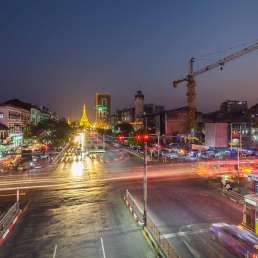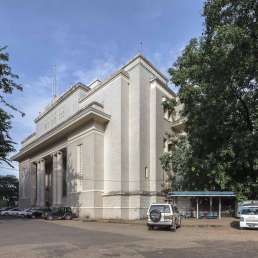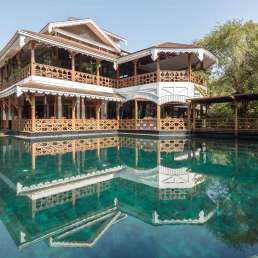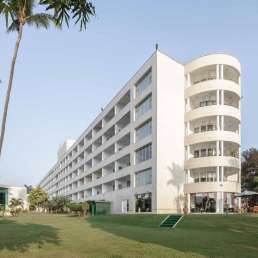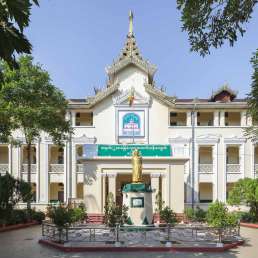Formerly: Secretariat
Address: 300 Thein Phyu Road
Year built: 1889-1905
Architect: Henry Hoyne-Fox
Welcome to the Secretariat, Yangon’s iconic colonial building: an epic symbol of British rule; a haunting monument to the broken dreams of Burmese independence. The sight of those glowing red bricks, obscured by forbidding barbed wire, transfixes legions of locals and visitors alike—such that its historic name still sticks, despite being officially known as the Ministers’ Building today. As the country launches into a spectacular and uncertain period of change, so will this vast, vacant and delicate complex search for a role in the new Myanmar.
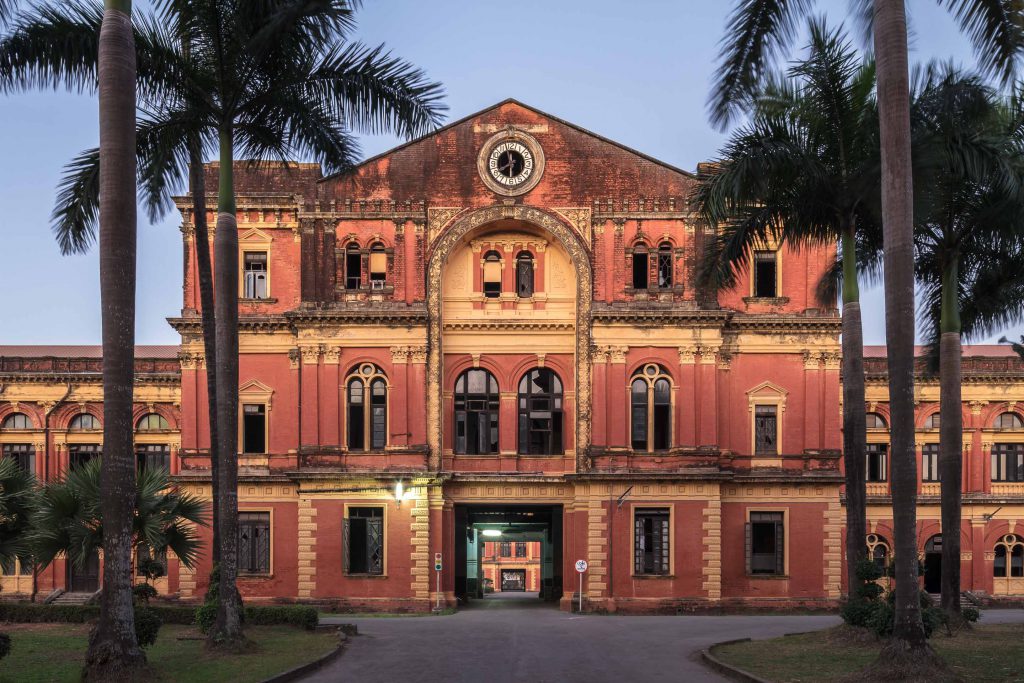
Built in several stages between 1889 and 1905, it became the administrative centre of British Burma. Britain annexed Lower Burma in 1852 and Rangoon became the main commercial and political hub for its new colonial possessions. With the annexation of Upper Burma in 1886, the bureaucracy grew such that a vast new building became necessary. (A previous Secretariat stood on Strand Road at the time.)
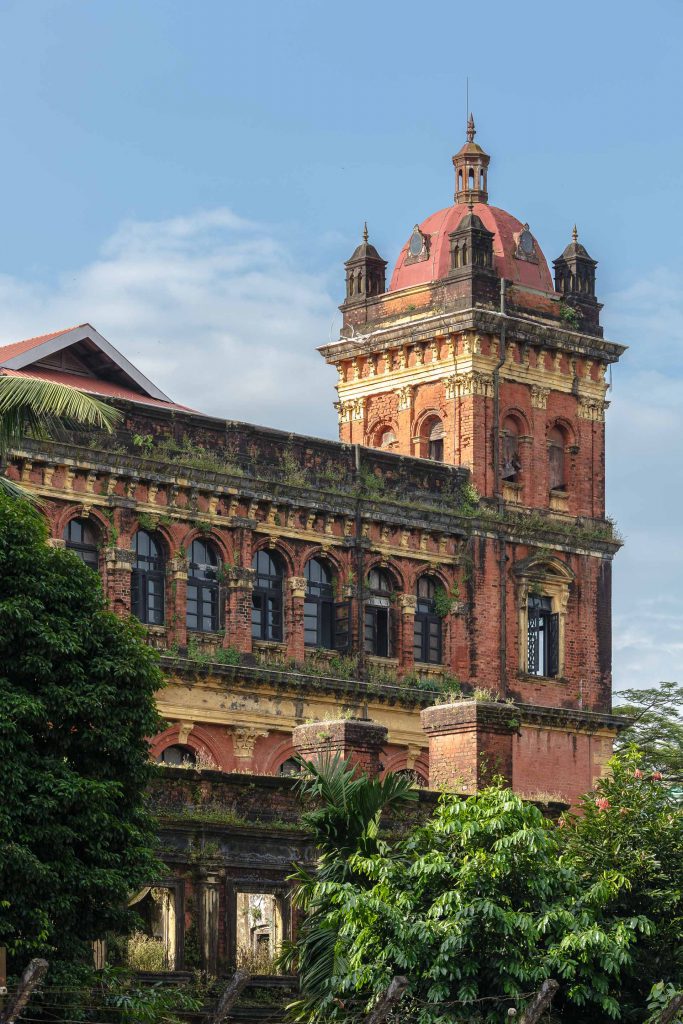
Burma was to remain an administrative subdivision of British India until 1937, when it became a dominion of Britain. The colonial bureaucracy was infamously expansive. It established a firm grip on all aspects of life through its myriad departments and divisions. Policing, prisons, asylums, finances, education, health: The colonists left nothing to chance. Inside the building, rows of officials and clerks hammered away at brand new typewriters.
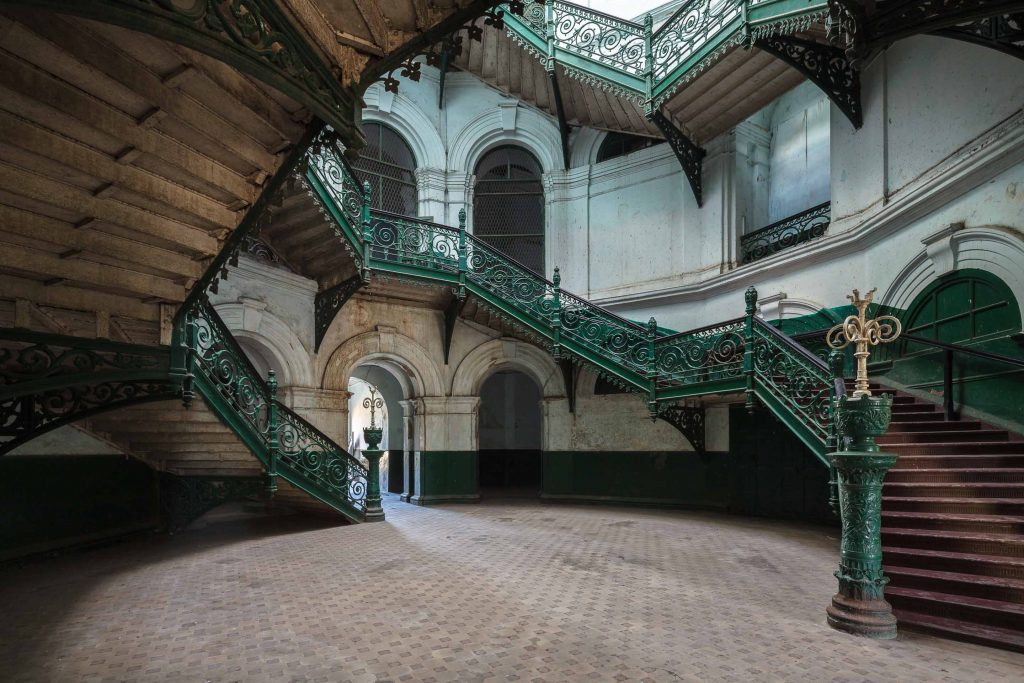
Though a symbol of colonialism, the Secretariat is also central to Burma’s independence struggle. The country’s first prime minister, Ba Maw, took office here in 1937. This was prescribed by the Government of Burma Act, which led to the separation of Burma from British India. The following year, student protesters in Mandalay demanded the release of anti-British activists. The movement escalated and reached Yangon. When mounted police tried to disperse the protesters, they killed a young man called Aung Kyaw. The street west of the Secretariat bears his name today.
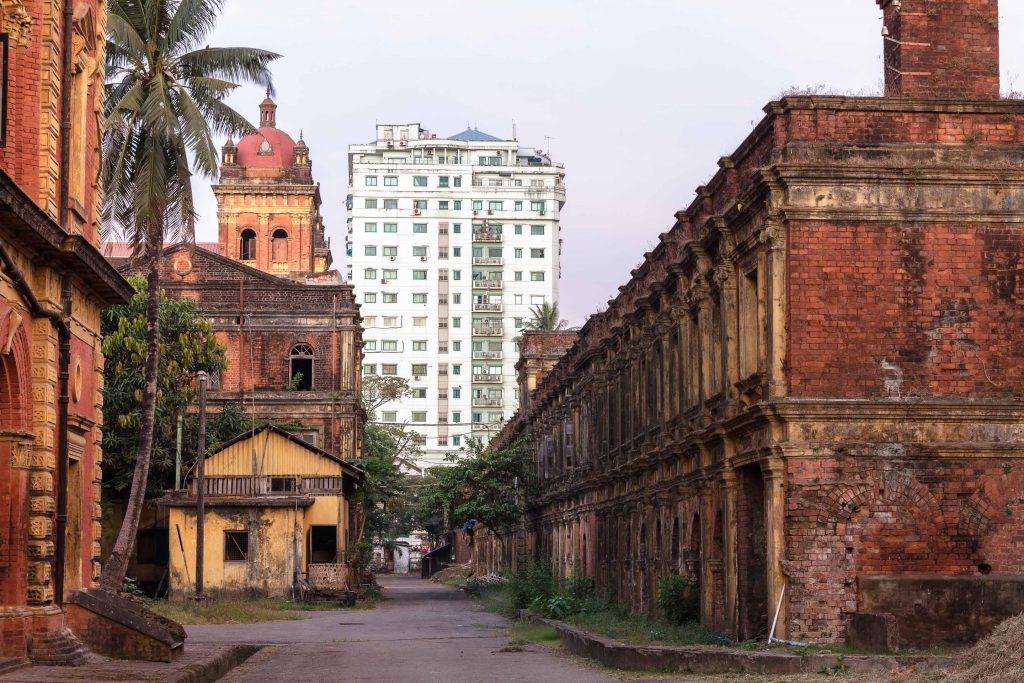
Nine years later, the Secretariat bore witness to modern Burma’s defining moment. In the morning of 19 July 1947, gunmen entered the Secretariat. They were looking for independence leader General Aung San. They found him on the first floor—along with six other ministers—and murdered them all. A low-key shrine (a table, some flowers and incense) now stands in the Secretariat’s northwestern wing, which has been maintained even as the building became derelict. At the time of writing, the room had clearly been renovated, unlike the rest of the complex.
Though only 32 years old at the time of his death, Aung San had already become a legend. He was a driving force behind the 1938 protests and later fought against the British, on the side of the Japanese, in the early years of the Second World War. Later in the war, he threw his lot in with the British and ended on the victors’ side. In early 1947, he travelled to London to negotiate the terms of independence, but died in the Secretariat only months later. (For a more detailed account of his life, please see the section on the Bogyoke Aung San Residence.)
On 4 January 1948, a few months later, the Secretariat became the stage of another historic event. At 4.20am (an auspicious time, chosen by astrologers) the Union Jack descended from a flagpole to the sounds of God Save the King. The flag of the Union of Burma rose. Thousands of Burmese thronged the streets on the day that marked the end of British rule.
The post-independence government used the Secretariat, as did Ne Win’s junta post-1962. However, they forbade residents from strolling in the park and declared the place off limits. In 1972, civil servants were placed more firmly under the control of army-appointed ministers. The complex was renamed the Ministers’ Office. In the eyes of some, the buildings’ structural decay, accelerated by the government’s move to Naypyidaw, symbolises the decline of the rule of law in Burma.
Henry Hoyne-Fox, an engineer at the Public Works Department, was responsible for drawing up the plans. He had ample space: The administration earmarked an entire city block measuring 16 hectares. (Hoyne-Fox also designed the Yangon General Hospital.) Baboo Naitram Rambux, a contractor with roots in northern India, oversaw the construction. He had taken over the business from his father (who began the works on the Secretariat, but died in a train accident in 1894). Rambux remained one of the most prominent builders in colonial Rangoon and was still listed in the local trade directories in 1956, aged 74, long after the country’s independence.
The Secretariat was built in stages, with the south wing erected first between 1889 and 1893. Soggy ground and torrential rainfalls during the monsoon seasons complicated the work and massive timber logs were used to stabilise the soil underneath the building. Drainage problems continue to plague the south wing, with huge puddles forming here during the rainy season. As a result, the building looks slightly uneven in places. Work resumed on the east and west wings in 1903. This time, construction took just two years: The Secretariat as it stands today was thus finally completed by 1905. There was now a veritable colonial palace in the heart of Rangoon: 18 ornate towers marked the corners of both east and west wings. A large dome rose above a majestic staircase along the west wing.
The building’s structural integrity has been frequently tested by natural disasters. An earthquake reaching magnitude 7.3 on the Richter scale shook Rangoon in the early afternoon of 5 May 1930. Among the government buildings, the Secretariat fared the worst. Twelve pillars supporting the main dome were cracked; several others of the west and north wings were shattered. The cupola and 10 of the 18 towers could not be saved. Ornaments adorning the original southern wing were also badly damaged and some had to be removed. Here, too, the ceilings had to be dismantled and the fissures in the western wall of the south block were widened. More recently, Cyclone Nargis, ravaging Yangon in 2008, damaged various sections of the roof that have only been repaired with rudimentary fixes.
Despite this, the Secretariat continues to impress through its scale and massing. It is more of a complex than a single building. The three wings are complemented by the staff quarters on the northern side. The authorities later added a modest building in the courtyard. It served as Burma’s parliament following independence. For the Secretariat’s design, Henry Hoyne-Fox drew on various architectural currents, with official colonial-era architecture from Calcutta among them. Materials were sourced from various locations: The terracotta roof tiles came from Marseilles, France. Large steel beams came from Britain, while smaller steel furnishings were cast locally.
The area around the Secretariat is unusually calm: No street vending is allowed on either side of the fenced-off building. After the government’s move to Naypyidaw, the military allowed some of its staff to live here with their families.
Today, the future of Yangon’s most iconic colonial building is slowly taking shape. In 2012, a new and little-known entity called Anawmar Art Group was awarded the lease on the building. It aims to spend a sizeable amount of its own funds on restoration works, but will require additional outside investment to bring the 40,000 square metre building back to an acceptable state. Estimates for the total price tag differ widely, with the highest being more than USD 100 million. The group states that it plans to return the Secretariat to public use. Current plans feature museums, galleries and a cultural centre. Big questions surround the commercial viability of such a huge undertaking.
